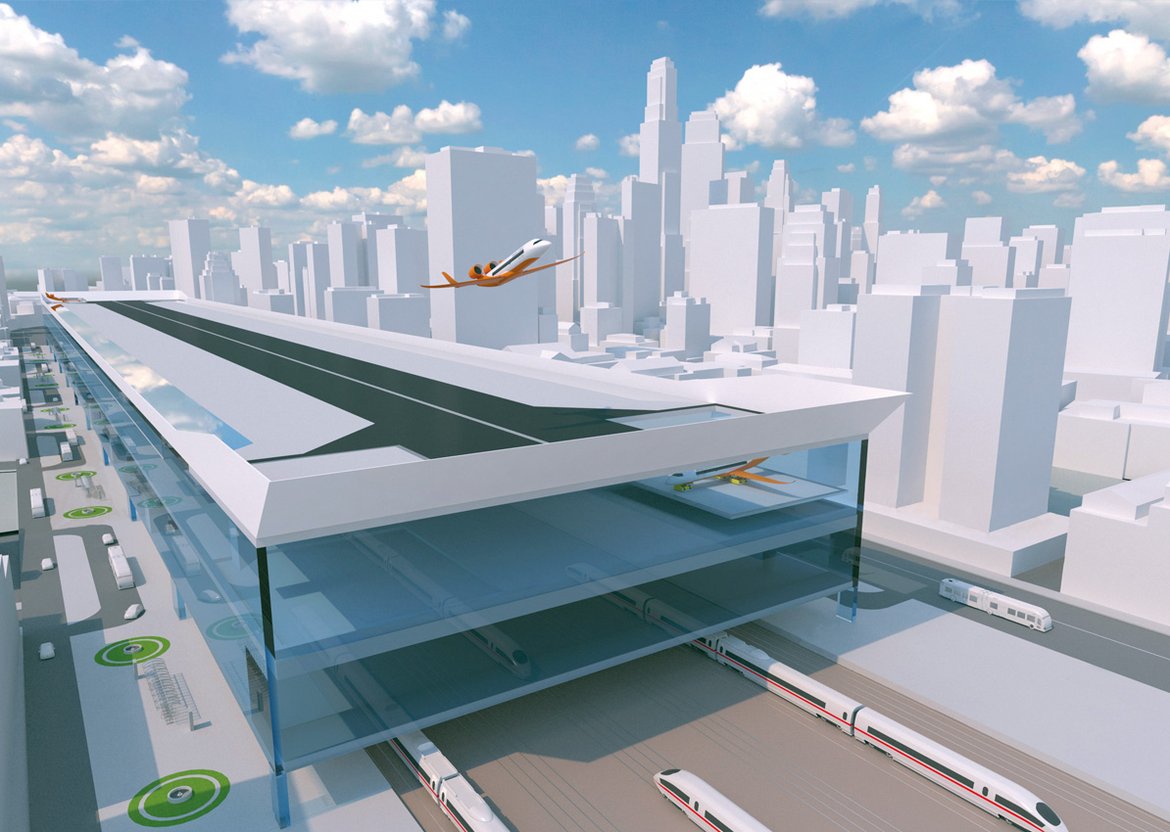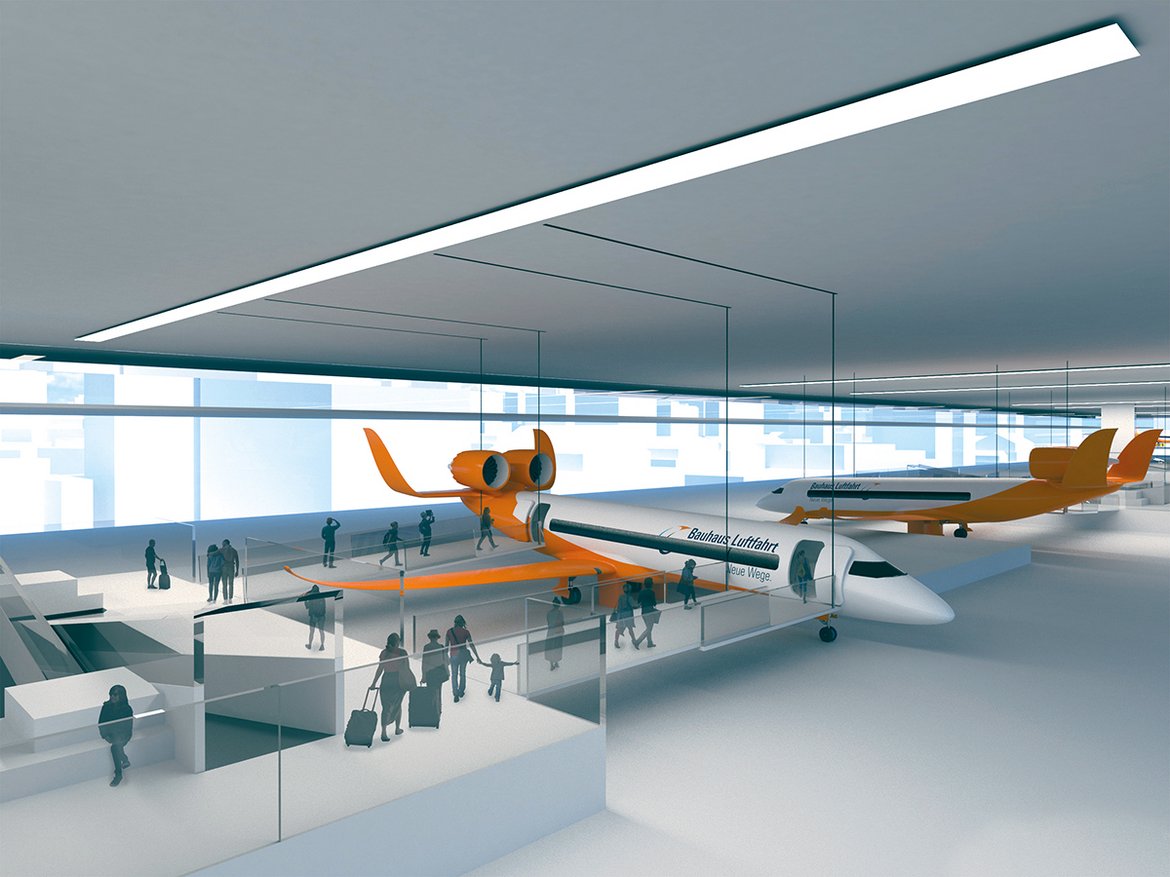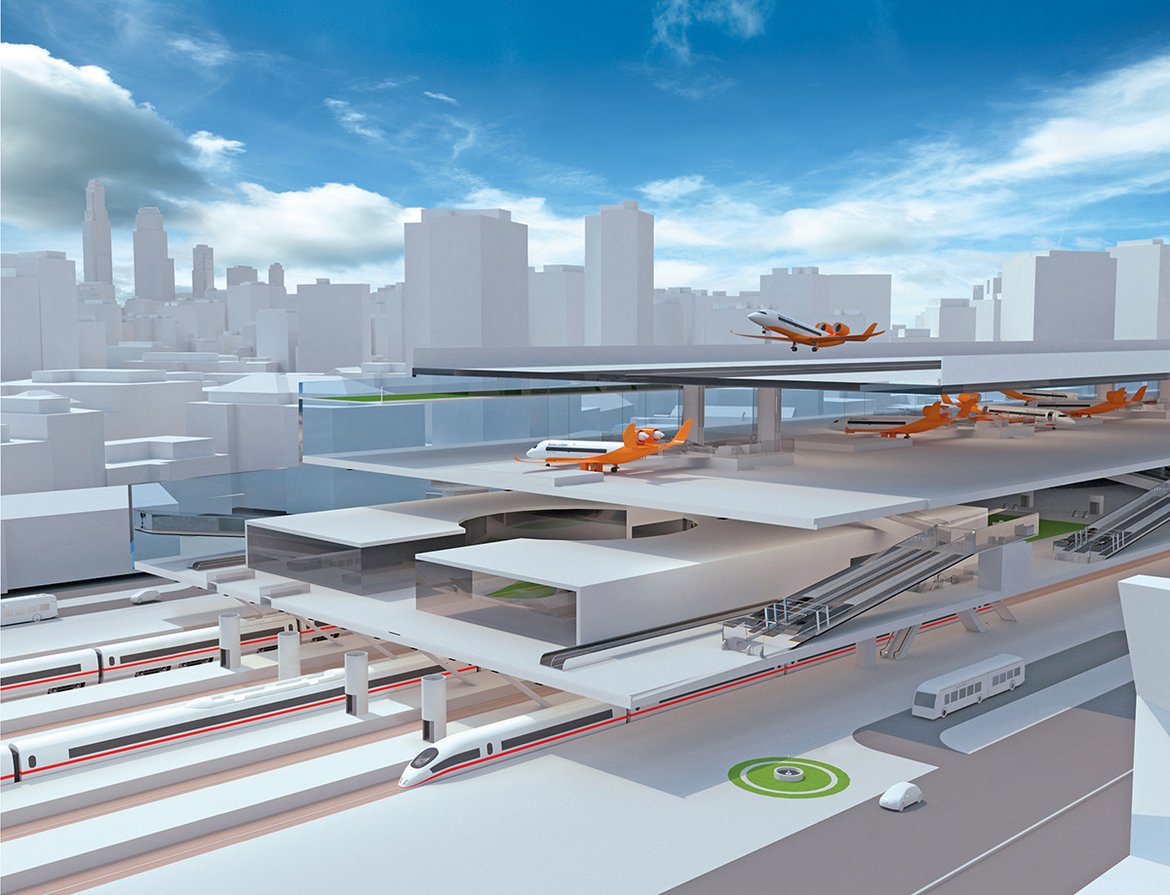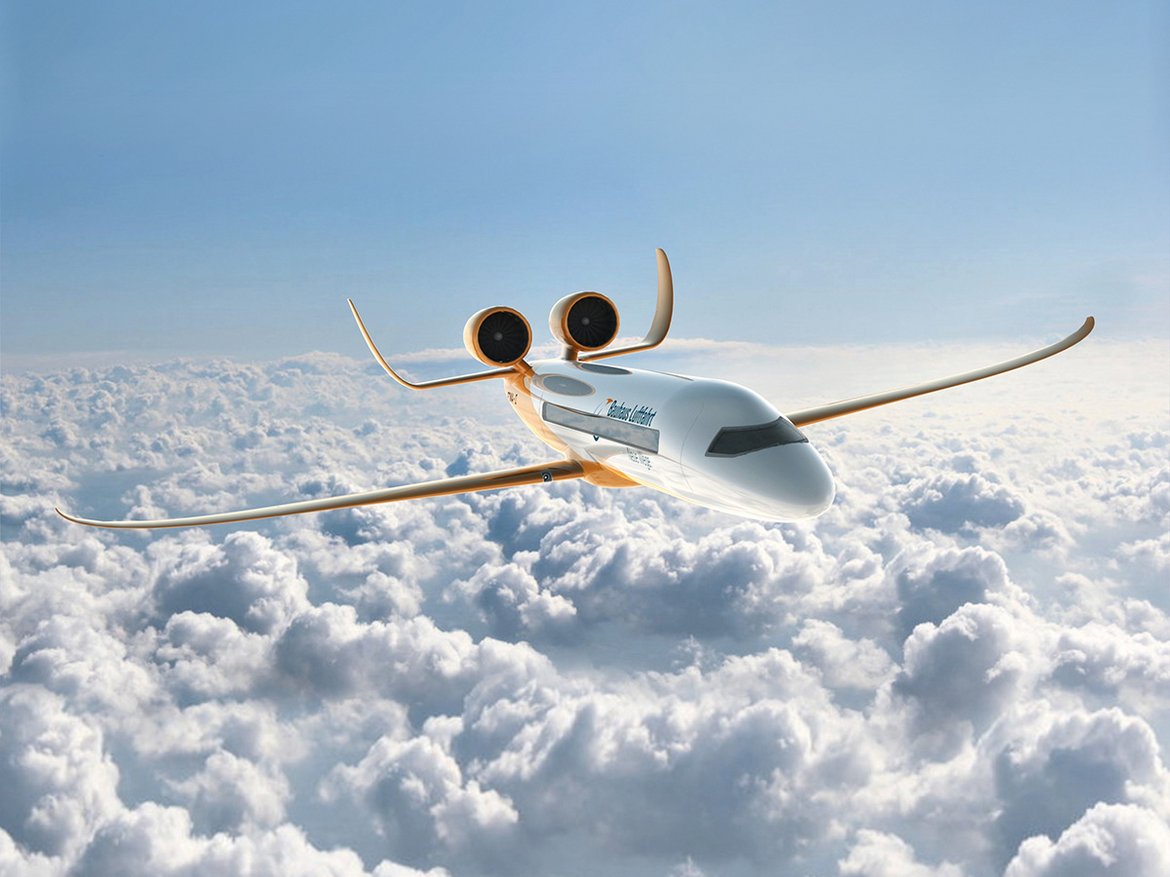The mission: to develop inner city airports and corresponding aircraft that operate regionally between these and conventional airports. The aim is to significantly increase air traffic capacity in a climate-friendly way. The concept was developed in 2016 by twelve students from the Glasgow School of Art together with 25 scientists from Bauhaus Luftfahrt.
The four main drivers of CentAirStation and Citybird are
- the continuing strong increase in urbanisation,
- global air traffic growth of around 4.7 per cent per year - a tripling of air traffic by 2040,
- the strong growth of megacities and the challenge of connecting them efficiently to airports,
- and the European Commission's "Flightpath 2050" target of transporting 90 per cent of all travellers from door to door within four hours.
Around 100 cities around the world suitable
Bauhaus Luftfahrt analysed available track areas in densely populated cities around the world. These were identified and measured using freely accessible geographical information. This showed that track areas for future CentAirStations would be available in almost 100 cities on all continents. The analysis also revealed that a maximum runway and building length of 650 metres and a maximum runway and building width of 90 metres would be required in each case.
Passenger capacities are significantly increased
CentAirStations have the potential to significantly increase the capacity of the air transport system by taking over existing and future city connections from conventional airports. The current number of seats available between cities in the USA, Europe and Asia and the number of possible locations per city determine the maximum passenger capacity of a CentAirStation at 10.5 million travellers per year.
- In the USA, total capacity could be increased by an average of 185 per cent,
- in Europe by 480 per cent
- and in Asia by 341 per cent.
The CentAirStation
- Length: 640 metres
- Width: 90 metres
- 4 levels:
- Track level for urban rapid transit or high-speed trains
- level with public facilities and areas for aviation-specific processes such as passenger security screening
- Apron level with 15 gate positions for ground handling of CityBirds, including all access points for the required equipment and connections
- Take-off and landing runway level for the safe and efficient operation of CityBirds in the smallest of spaces
Short passenger routes
The predominantly vertical passenger routes through the CentAirStation building allow very short processing times: Departing passengers need 15 minutes from their arrival at the airport until their aircraft takes off. Arriving passengers can leave the building just ten minutes after disembarking from the aircraft.
The CityBird - adapted to inner-city operations
The high population density in cities and the limited space available place high demands on noise protection, safety and short take-off capability (STOL) of the aircraft. The aircraft must also be efficient - with our current knowledge, we would be planning with an electric drive. It should also be fast enough to reach the target of four hours door-to-door over the required range. And it should not interfere with ongoing processes at conventional airports.
New technologies in aircraft design:
- a low wing arrangement with engines mounted at the rear,
- a short and panelled chassis
- and a simple high-lift system along the entire span.




